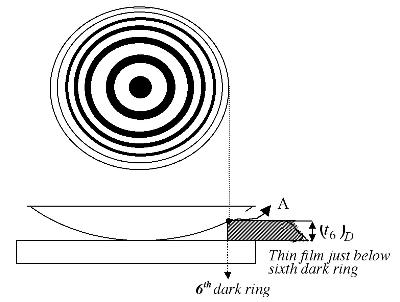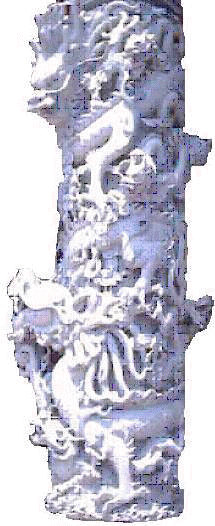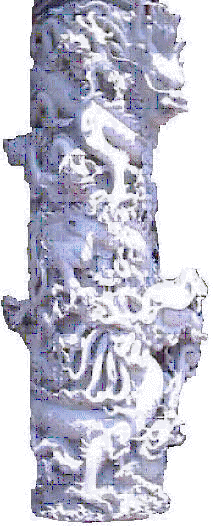A new application of Newton's rings experiment
Demonstration
This simple demonstration shows how the interference of light can be used to determine the thickness of a thin film.
Apparatus and materials
Travelling microscope
Plano convex lens
Plane glass plate (optically flat)
Reflector
Sodium light source
A thin film whose thickness is to be measured (may be a strip of paper)
Technical notes
The thin film must be inserted carefully between the plane glass plate and plano convex lens without disturbing the fringes.
NB A high-pressure sodium street lamp as used in colour studies will not give sharp fringes in this experiment. If the centre fringe is not dark, try polishing the lens and flat with a spectacle cleaning cloth.
Safety
Read our standard health & safety guidance
Procedure
a Turn on the sodium lamp.
b Place the plano convex lens on the plane glass plate with curved surface in contact with the glass plate and place this system inside a reflector located under a travelling microscope.
c Use a reflector to direct light onto the optical system. Adjust the inclination of the reflector to get maximum brightness (or the height of the lamp).
d Focus the travelling microscope to see the bright and dark circular fringes (Newtons rings).
e Carefully insert the thin film (say a paper strip) between the plano convex lens and the plane glass plate until the paper stops moving (see the diagram).
f Now look through the microscope. Start from the central dark spot and count the number of dark fringes (or bright fringes) to the fringe that is adjacent to the thin film. Generally for ordinary paper samples, the number of fringes are of the the order of 175 to 230. Patience is needed!
g
For dark fringes.
The thickness of the thin film, t , is given by 2 t + l /2 =(2 n +1) l /2 which simplifies to
t = n l /2
For bright fringes
The thickness of the film is given by
2 t + l /2 = n l which simplifies to t = (2 n -1) l /4.

Teaching notes
1 When sodium light is incident on the plano convex lens system, light rays reflect from upper and lower layers of the air present between lens and the glass plate. The sodium light source is almost monochromatic.
There is no phase change at the lens-air surface, because the wave if going from a higher to a lower refraction index medium. At the air-plate surface, however, there is a phase shift of p with the reflection from a medium of higher refractive index.
Waves reflected from these two surfaces interfere, forming bright bands where the path length in air produces two waves in phase and dark bands where the waves are in antiphase.
The centre of the pattern is black. There is no reflection because there is no air gap here.
2 The thickness of the thin film is equal to the thickness of the airfilm adjacent to it.
3 The fringes are circular as the locus of points of equal thickness of air is a circle.
This experiment was submitted by K.H. Raveesha, Head of Physics at the CMR Institute of Technology in India.
.


